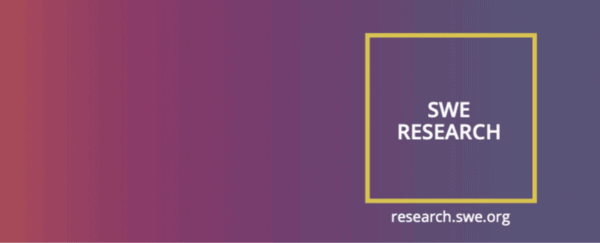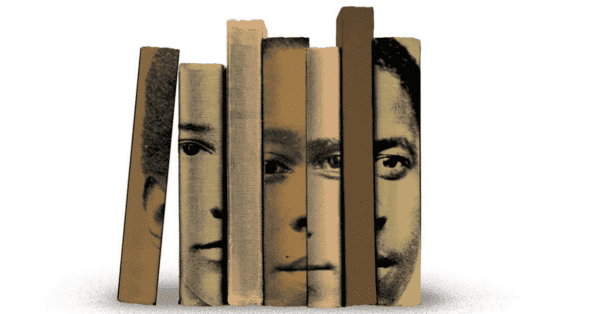Engineers and scientists today hear many calls to work across disciplines in order to meet the evolving challenges of our time. But doing so is more challenging – and more rewarding – than it seems.
Here, we provide a snapshot of the road that brought us to collaborate across the industry-academia divide and develop novel resources to support women and other minoritized students in STEM. Our collaboration is unusual because we partnered across the divide with a common goal to support student persistence in STEM, especially among women and students of color.
For both majoritized and minoritized students, prompts to think about their academic challenges in light of their purpose — their “why” — elevated protective beliefs that can help them persist and pursue STEM careers. Now we are working with STEM faculty to integrate purpose reflection into course assignments, even in gateway STEM classes.
Dr. Jayshree Seth’s Story

“Here we are,” said the driver. I had just arrived at the White House.
It was an honor to be amongst those invited to attend a summit to promote equity in scientific fields, hosted by the highest office in the country. It was quite the milestone in a journey that started out with me not thinking of myself as a scientist to becoming a science advocate and then my road to this momentous event, with renewed commitment, to make it better for those who come after us.
I never thought of myself as the “science type.” I wasn’t the one who tinkered with toys or toyed with tools when I was a young girl. I was curious — less about things, more about people. I knew I wanted to help improve lives and make the world a better place. I never encountered a woman scientist or engineer, I could not see the human impact of the roles, and I certainly didn’t associate science and engineering with my goals. However, strong parental guidance directed me to the field of engineering, and I followed the path laid out before me.
I ended up in the U.S. for graduate school, and it was during my master’s work that it hit me, that feeling of “Am I doing what I thought I wanted to be doing?” I made some tough decisions and switched my area of research for my doctoral work, ending up in a project where I could provide more of a human connection.
I knew I would be starting over in some ways, but I could feel more inspired — not necessarily by the topic itself, but for the context I could build around it. Intuitively, what I ended up doing was pulling together information and building context around things to say, “What I am doing is helping others.” This context had not been easily available in my STEM educational journey.
I joined 3M after finishing my doctoral work, and here I found ample context to inspire me to use science to drive innovation, collaborate with others, and solve problems for customers. It was a great realization that my role as a scientist could have a rich human context, a social backdrop, and relevance to the community. I rose to the level of corporate scientist, the highest designation, as the fourth woman and first engineer to do so.
In 2018, I was appointed to a newly created role of chief science advocate. The position was created based on research into public perception of science and recognizing the need for advocacy. This role has allowed me to grow in ways I never imagined. Not only do I “do science,” I also advocate for science, for diversity in science, and for a human context in science.
I interact with many scientists across the school/college/career spectrum, and I have found many women and those underrepresented in STEM fields who had the same feeling as me while I was navigating my educational journey. It compelled me to dig deeper and look for a term to describe this experience, and I found the concept of “communal goal incongruity” in psychology.
When you feel communal goal incongruity, you tend to reevaluate what you are doing and how you could or should change it. I ran across a body of work by a professor, Dr. Amanda Diekman on this exact concept and its impact on women in STEM. I dug up paper after paper and read them in one sitting.
I had to contact her. My cold email was followed by a very heartwarming call, which gave us both a sense of validation. We had congruent goals: She had a longstanding interest in gender roles, specifically the impact of social structure and the obstacles it creates for women in STEM, while I was committed to encouraging and supporting more women and underrepresented minorities in STEM.
Dr. Diekman and I agreed that it would be great to conduct research on the topic to help those who come after us, given the positions we held and the platforms we had. It has been a unique opportunity for a collaboration between industry and academia to address a problem that impacts us all. We are putting science behind science advocacy. Our world requires innovation. Innovation needs science. Science demands diversity. Diversity warrants equity.
The 3M-sponsored research has now been published in Scientific Reports, an open-access Nature family journal. We found that reflecting on purpose can help not just those who are underrepresented, but all students who persist through challenges. We are excited about the findings and are working on a repository of reflection exercises that faculty can use in their classrooms. The repository, called PRISM (Purpose Reflection Integration in STEM Modalities), is housed online; resources are free to access and download.
I could have never imagined that this would be a milestone in my journey. I have realized that not all roads are straightforward — not all navigation can be on autopilot. But a commitment to make the path better for others is a worthwhile destination.
Dr. Amanda Diekman’s Story

On one of my college tours, my dad told me, “Once you get into a college classroom, you won’t ever leave.” He was right. I’m a social scientist who has happily stayed in academia my entire career.
The work of science is challenging because it takes a very long time, and the impact of the work on other people is not always apparent. In part, this is how knowledge building works: We contribute ideas, data, and methods to a public, shared knowledge base, and the impact of a particular contribution may not be known for decades or more. I’m pretty good at delaying gratification, but that’s a long time to wait for something that might not come.
For several years, my collaborators and I have documented how beliefs about STEM deter communally oriented students. In general, people think that STEM fields do not allow opportunities to work with or help other people. For people who especially value these communal goals, why would they choose STEM? Yet, as our experience and lots of data show us, STEM fields frequently involve working closely with others and finding answers that benefit communities and society. We just don’t always hold that up to the light.
Connecting with Dr. Seth was eye-opening; she resonated with our lab’s findings and wanted to work together to understand how we can put this knowledge to use to build a stronger, more diverse, and more inclusive STEM workforce. Our initial conversation felt like someone was holding up a flashlight to a whole new part of the forest I hadn’t seen before — but that certainly called to be explored.
We joined forces to understand more about what messages and prompts might lead students from underrepresented groups in STEM to persist in STEM majors. We randomly assigned some students to consider their academic challenges in light of their purpose, and other students only considered their challenges. Students who considered purpose reported more motivation and belonging in STEM and less stress – and this effect occurred across gender and race. Thinking about purpose helped all of the students, but was especially important for women of color who started with extremely high levels of stress.
So, to the students reading this: Take a minute to consider your “why” – whatever it is. It helps to remember that all of the hard work is for something that really matters to you.
The story of our collaboration illustrates the ideas in our research. Although our professional roles differ, we each care about answering these questions and putting into place policies and practices that open doors and create pathways for a wider range of students. If you are a student, take time to reflect on your purpose and ask your classmates about their “why.” If you are in a position of power as an instructor, advisor, or administrator, you have opportunities to create opportunities for others. You have an ability to create a position for yourself that includes the work you find fulfilling and motivating.
There will always be more to do, so choose carefully what tasks you put on your list. Reflecting on your own “why” — what is energizing and motivating to you — will help you to do your best work and enable others to do their best work. Many of us made our paths by walking, but we can clear the path for others, wherever their paths lead. Their paths will not be our paths, and yet the way that we created our paths might hold lessons for them.

What Is Your Why?
For many of us (and especially women and people of color in STEM), the “why” has to do with making a difference. And yet there is remarkably little discussion of purpose within professional roles. Knowing your why can lead you to new ventures. For example, Dr. Seth cared about creating new and better pathways in STEM, and this led to discussing these ideas with Dr. Diekman and her research team. The collaboration has stretched us each in new ways; we know more about how our respective industry or academic worlds operate, and we can see both the common goals and the different priorities.
What steps can you take to highlight purpose and collaboration in your work and in your colleagues’ and mentees’ work? First, spend some time reflecting on and articulating your own purpose. What brings meaning and joy to your work? Then, consider what specific activities already in your role link to this purpose. Can you do more of these and omit activities that are less relevant to your purpose?
Then, extend this exercise to your colleagues. If you supervise people, ask them what they find meaningful or what motivates them. Together, consider how to bring more of these tasks into their portfolios, as well as strategies for delegating or decreasing less purpose-relevant tasks. You might also share what you find meaningful; this practice holds multiple benefits because it humanizes you, it clarifies why you are asking supervisees to perform certain tasks, and it can just provide a different framing for the work.
Links
- Research paper: Purpose reflection benefits minoritized students’ motivation and well-being in STEM | Scientific Reports (nature.com)
- PRISM Repository of Purpose Reflection Exercises: OSF | Purpose Reflection Integration in STEM Modalities (PRISM) Toolkit
- Dr. Jayshree Seth’s TEDx talk: Why I reframed my “why” – The context of purpose
- Dr. Jayshree Seth’s book series: The Heart of Science – Engineering Footprints, Fingerprints, & Imprints and The Heart of Science – Engineering Fine Print
Authors
-

Jayshree Seth, Ph.D., is a corporate scientist and chief science advocate at 3M. In 2020, she was awarded SWE's highest Achievement Award. She is the author of the books "The Heart of Science – Engineering Footprints, Fingerprints, & Imprints" and "The Heart of Science – Engineering Fine Print," published by SWE, and all sales proceeds go to a scholarship for underrepresented minority women in STEM.
View all posts -

Amanda Diekman, Ph.D., is Provost Professor in the Department of Psychological and Brain Sciences and Associate Vice Provost for Faculty and Academic Affairs at Indiana University Bloomington.
View all posts






